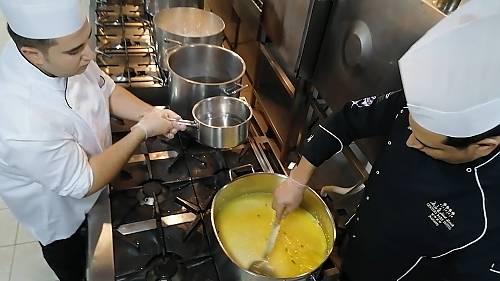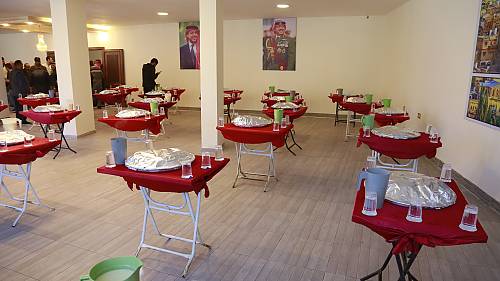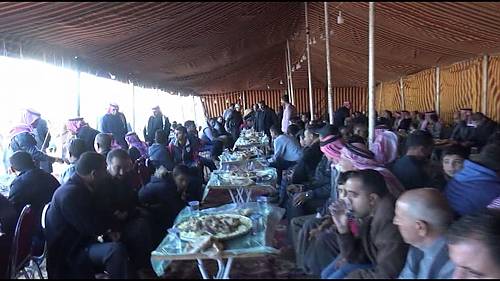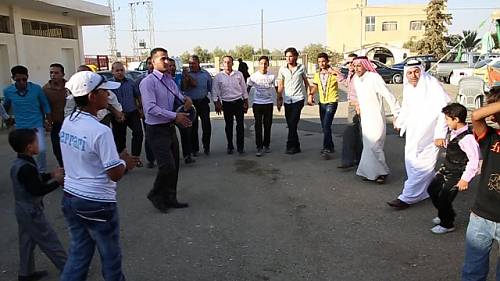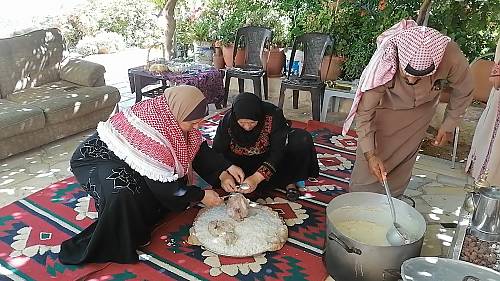Al-Mansaf in Jordan, a festive banquet and its social and cultural meanings
Inscribed in 2022 (17.COM) on the Representative List of the Intangible Cultural Heritage of Humanity

Al-Mansaf is a festive dish that is central to Jordan’s socio-cultural events. An important and well-known symbol that evokes a deep sense of identity and social cohesion, it is associated with the agro-pastoral lifestyle in which meat and dairy are readily available. Large chunks of sheep or goat meat are boiled with spices in a yogurt sauce and served with rice or sometimes bulgur over a layer of thin bread. The preparation itself is a social event, with cooks discussing common concerns, telling stories and singing. The layers of bread, rice and meat are arranged on a platter and garnished with fried, desiccated almonds. In northern Jordan, fried bulgur balls filled with minced meat are also placed around the dish. The host’s relatives carry the platters to the reception hall and the guests sit around them, with five to seven people around each platter. Traditionally, the dish is consumed with the right hand while the left is placed behind the back, but today some people use dishes and spoons. Women generally pass down the recipes and related practices (such as milking the goat or sheep) to their daughters and granddaughters. Culinary institutes and universities also contribute to the dish’s transmission.
